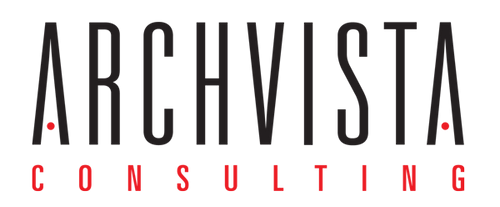Click the title or “+” button for an overview of an event. To view event details or register for an event click the “Read more” button of the expanded event overview.

If setup correctly a BIM model can produce documents without a lot of rework and with the graphic output quality firms have come to expect from past CAD programs. We will discuss methods to adopt your existing standards within a BIM program as well as new opportunities for 3D documentation.
Part of a 6-Part Course on Implementing BIM into Architecture.
BIM adoption is more about process change than technology adoption. So for many, the question is not when to adopt but how – how to get started, how to leverage BIM to its full extent, how to implement BIM in different project environments, and how to set up the necessary processes and protocols to maximize the benefits. The answers to these questions and more are covered in the Implementing BIM into Architecture series.

We will review how BIM is used for collaboration locally within an office as well as externally through the internet. We will review BIM Server applications available within BIM tools as well as growing opportunities for Cloud-Based BIM services.
Part of a 6-Part Course on Implementing BIM into Architecture.
BIM adoption is more about process change than technology adoption. So for many, the question is not when to adopt but how – how to get started, how to leverage BIM to its full extent, how to implement BIM in different project environments, and how to set up the necessary processes and protocols to maximize the benefits. The answers to these questions and more are covered in the Implementing BIM into Architecture series.

In this session we will discuss energy analysis tools, how to setup a BIM model for LEED requirements and modeling methods that will allow a BIM model to work efficiently with these analysis tools as well as avoid common problems.
Part of a 6-Part Course on Implementing BIM into Architecture.
BIM adoption is more about process change than technology adoption. So for many, the question is not when to adopt but how – how to get started, how to leverage BIM to its full extent, how to implement BIM in different project environments, and how to set up the necessary processes and protocols to maximize the benefits. The answers to these questions and more are covered in the Implementing BIM into Architecture series.
Architecture is going through a fundamental shift in how designers communicate ideas. Today’s clients are technology savvy and becoming comfortable with interactive design immersion technologies such as iPads, BIMx, Google Cardboard VR and Oculus Rift.
Discover how mobile and virtual reality technologies are changing the way architects interact with clients, consultants, contractors and other stakeholders. The seminar will review case studies that utilize immersion technologies to improve their design process, build client engagement, expand services and support remote communication. We invite you to take a ride with us as we embark on a look at present day use of immersion technologies as well as a glimpse to the future where we envision how mobile and virtual reality will impact the profession.
Attendees will receive a FREE BIMx Cardboard VR viewer and BIMx app compatible with Apple iPhone or Android Phones.
Learning Objectives:
- Review technologies that can increase your presentation effectiveness and sell your design ideas to clients.
- Examine popular architectural design immersion technologies including BIMx, Google Cardboard VR and Oculus Rift.
- Discover through case studies how architects use design immersion to improve the design process, build client engagement, expand services and support remote communication.
- Explore how mobile and virtual reality impact current and future methods for presenting and communicating design and construction.
AIA CES : 1 Unit
Architecture is going through a fundamental shift in how designers communicate ideas. Today’s clients are technology savvy and becoming comfortable with interactive design immersion technologies such as iPads, BIMx, Google Cardboard VR and Oculus Rift.
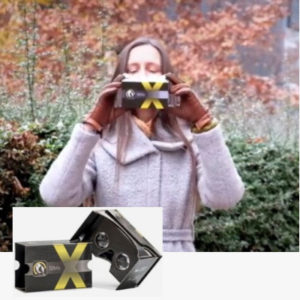 Discover how mobile and virtual reality technologies are changing the way architects interact with clients, consultants, contractors and other stakeholders. The seminar will review case studies that utilize immersion technologies to improve their design process, build client engagement, expand services and support remote communication. We invite you to take a ride with us as we embark on a look at present day use of immersion technologies as well as a glimpse to the future where we envision how mobile and virtual reality will impact the profession.
Discover how mobile and virtual reality technologies are changing the way architects interact with clients, consultants, contractors and other stakeholders. The seminar will review case studies that utilize immersion technologies to improve their design process, build client engagement, expand services and support remote communication. We invite you to take a ride with us as we embark on a look at present day use of immersion technologies as well as a glimpse to the future where we envision how mobile and virtual reality will impact the profession.
Attendees will receive a FREE BIMx Cardboard VR viewer and BIMx app compatible with Apple iPhone or Android Phones.
Learning Objectives:
- Review technologies that can increase your presentation effectiveness and sell your design ideas to clients.
- Examine popular architectural design immersion technologies including BIMx, Google Cardboard VR and Oculus Rift.
- Discover through case studies how architects use design immersion to improve the design process, build client engagement, expand services and support remote communication.
- Explore how mobile and virtual reality impact current and future methods for presenting and communicating design and construction.
AIA CES : 1 Unit
Architecture is going through a fundamental shift in how designers communicate ideas. Today’s clients are technology savvy and becoming comfortable with interactive design immersion technologies such as iPads, BIMx, Google Cardboard VR and Oculus Rift.
 Discover how mobile and virtual reality technologies are changing the way architects interact with clients, consultants, contractors and other stakeholders. The seminar will review case studies that utilize immersion technologies to improve their design process, build client engagement, expand services and support remote communication. We invite you to take a ride with us as we embark on a look at present day use of immersion technologies as well as a glimpse to the future where we envision how mobile and virtual reality will impact the profession.
Discover how mobile and virtual reality technologies are changing the way architects interact with clients, consultants, contractors and other stakeholders. The seminar will review case studies that utilize immersion technologies to improve their design process, build client engagement, expand services and support remote communication. We invite you to take a ride with us as we embark on a look at present day use of immersion technologies as well as a glimpse to the future where we envision how mobile and virtual reality will impact the profession.
Attendees will receive a FREE BIMx Cardboard VR viewer and BIMx app compatible with Apple iPhone or Android Phones.
Learning Objectives:
- Review technologies that can increase your presentation effectiveness and sell your design ideas to clients.
- Examine popular architectural design immersion technologies including BIMx, Google Cardboard VR and Oculus Rift.
- Discover through case studies how architects use design immersion to improve the design process, build client engagement, expand services and support remote communication.
- Explore how mobile and virtual reality impact current and future methods for presenting and communicating design and construction.
AIA CES : 1 Unit
Architecture is going through a fundamental shift in how designers communicate ideas. Today’s clients are technology savvy and becoming comfortable with interactive design immersion technologies such as iPads, BIMx, Google Cardboard VR and Oculus Rift.
 Discover how mobile and virtual reality technologies are changing the way architects interact with clients, consultants, contractors and other stakeholders. The seminar will review case studies that utilize immersion technologies to improve their design process, build client engagement, expand services and support remote communication. We invite you to take a ride with us as we embark on a look at present day use of immersion technologies as well as a glimpse to the future where we envision how mobile and virtual reality will impact the profession.
Discover how mobile and virtual reality technologies are changing the way architects interact with clients, consultants, contractors and other stakeholders. The seminar will review case studies that utilize immersion technologies to improve their design process, build client engagement, expand services and support remote communication. We invite you to take a ride with us as we embark on a look at present day use of immersion technologies as well as a glimpse to the future where we envision how mobile and virtual reality will impact the profession.
Attendees will receive a FREE BIMx Cardboard VR viewer and BIMx app compatible with Apple iPhone or Android Phones.
Learning Objectives:
- Review technologies that can increase your presentation effectiveness and sell your design ideas to clients.
- Examine popular architectural design immersion technologies including BIMx, Google Cardboard VR and Oculus Rift.
- Discover through case studies how architects use design immersion to improve the design process, build client engagement, expand services and support remote communication.
- Explore how mobile and virtual reality impact current and future methods for presenting and communicating design and construction.
AIA CES : 1 Unit
Architecture is going through a fundamental shift in how designers communicate ideas. Today’s clients are technology savvy and becoming comfortable with interactive design immersion technologies such as iPads, BIMx, Google Cardboard VR and Oculus Rift.  Discover how mobile and virtual reality technologies are changing the way architects interact with clients, consultants, contractors and other stakeholders. The seminar will review case studies that utilize immersion technologies to improve their design process, build client engagement, expand services and support remote communication. We invite you to take a ride with us as we embark on a look at present day use of immersion technologies as well as a glimpse to the future where we envision how mobile and virtual reality will impact the profession.
Discover how mobile and virtual reality technologies are changing the way architects interact with clients, consultants, contractors and other stakeholders. The seminar will review case studies that utilize immersion technologies to improve their design process, build client engagement, expand services and support remote communication. We invite you to take a ride with us as we embark on a look at present day use of immersion technologies as well as a glimpse to the future where we envision how mobile and virtual reality will impact the profession.
Learning Objectives:
- Review technologies that can increase your presentation effectiveness and sell your design ideas to clients.
- Examine popular architectural design immersion technologies including BIMx, Google Cardboard VR and Oculus Rift.
- Discover through case studies how architects use design immersion to improve the design process, build client engagement, expand services and support remote communication.
- Explore how mobile and virtual reality impact current and future methods for presenting and communicating design and construction.
AIA CES : 1 Unit
Architecture is going through a fundamental shift in how designers communicate ideas. Today’s clients are technology savvy and becoming more comfortable with interactive design immersion technologies such as iPads, BIMx, Google Cardboard VR, HTC Vive and Oculus Rift. We invite you to join this presentation to learn how mobile and virtual reality technologies are changing the way architects interact with clients, consultants, contractors and other stakeholders.
|
|
|
|
|
|
Limited seats are available so register early.
AIA CE: 1 LU
Architecture is going through a fundamental shift in how designers communicate ideas. Today’s clients are technology savvy and becoming more comfortable with interactive design immersion technologies such as iPads, BIMx, Google Cardboard VR, HTC Vive and Oculus Rift. We invite you to join this presentation to learn how mobile and virtual reality technologies are changing the way architects interact with clients, consultants, contractors and other stakeholders.
|
|
|
|
|
|
Limited seats are available so register early.
AIA CE: 1 LU
 Whether you’re an established firm or a young studio, technology is rapidly evolving in the AEC market and clients are expecting high-tech when it comes to architectural design services. This is leading businesses to rethink their design approach. We will review how firms are adapting by shifting BIM earlier into the design process, generating ideas with algorithmic design, incorporating “real-time” visualization, and integrating immersive technologies such as BIMx, Unreal Engine and HTC Vive into their workflow. Join us to embark on a look at High-Tech in today’s creative workflow and glimpse the future where we envision how design technologies will impact the profession.
Whether you’re an established firm or a young studio, technology is rapidly evolving in the AEC market and clients are expecting high-tech when it comes to architectural design services. This is leading businesses to rethink their design approach. We will review how firms are adapting by shifting BIM earlier into the design process, generating ideas with algorithmic design, incorporating “real-time” visualization, and integrating immersive technologies such as BIMx, Unreal Engine and HTC Vive into their workflow. Join us to embark on a look at High-Tech in today’s creative workflow and glimpse the future where we envision how design technologies will impact the profession. Algorithmic Design Meets BIM Algorithmic Design Meets BIM
Discover how combining algorithmic design with BIM can be used to generate design concepts with tools such as ARCHICAD, Rhino and Grasshopper.
|
 Influence of Gaming on Architecture Influence of Gaming on Architecture
Explore the benefits of “real-time” rendering and how gaming engines are allowing architects to not just visualize a project but experience design. |
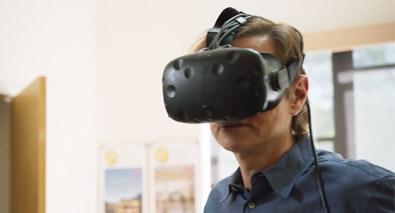 Immersive Design – VR to Mobile Immersive Design – VR to Mobile
Examine immersion technologies that support the architectural design process without breaking the bank including BIMx, HTC Vive and Oculus Rift. |
Presenter:
 Thomas M. Simmons, President, ARCHVISTA Consulting
Thomas M. Simmons, President, ARCHVISTA Consulting- Simmons was recently a speaker at the Graphisoft 2020GO Conference in Budapest and at the AIA California Monterey Design Conference. He has over 20 years of experience implementing BIM into architecture, interior design and construction companies ranging from small firms to multi-national corporations as well as management of the Architectural Record – Record Homes Virtual Tours and the award-winning NASA Virtual Tours.
What you will learn:
- Review technologies that increase your presentation effectiveness to help sell your design.
- Examine design and visualization solutions for architecture including BIMx, Rhino, Grasshopper, ARCHICAD, Unreal Engine and HTC Vive.
- Discover how architects use immersion technologies, through case studies, to improve the understanding of a project and create better design decisions.
- Explore how mobile and virtual reality are impacting methods for presenting and communicating in the design and construction phase.
AIA CE: 1.0 LU’s
Limited seats are available so register early.
Forward-thinking architecture firms and interior designers are increasingly leaning on real-time visualization to explore, evaluate, and present designs. By providing clients and project stakeholders the opportunity to experience spaces in interactive and immersive environments, real-time technology offers a compelling method for communication.
The next generation of architectural visualization tools is providing new ways to accelerate workflows. More intuitive user interfaces are drastically reducing learning curves, while offering new ways to quickly and easily connect to BIM software for increased productivity and faster iterations.
In this course you will learn:
- A review of software solutions that offer real-time visualization.
- How real-time visualization can be used as a design tool for architecture and interior design.
- Hardware required to run real-time visualization solutions.
- Process to integrate 3D BIM models and how you update project changes.
- Adding and editing materials, lights, furnishings and landscape elements.
- How to create and render still images and animations
- The process to use real-time visualization with VR (virtual reality)
AIA CES: 2 LUs
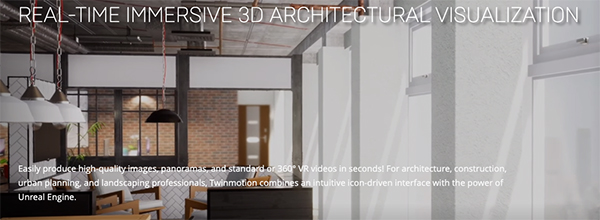
Credits: 1 AIA LU/HSW; 1 AIBD P-CE; 0.1 IACET CEU
May qualify for learning hours through most Canadian architectural associations
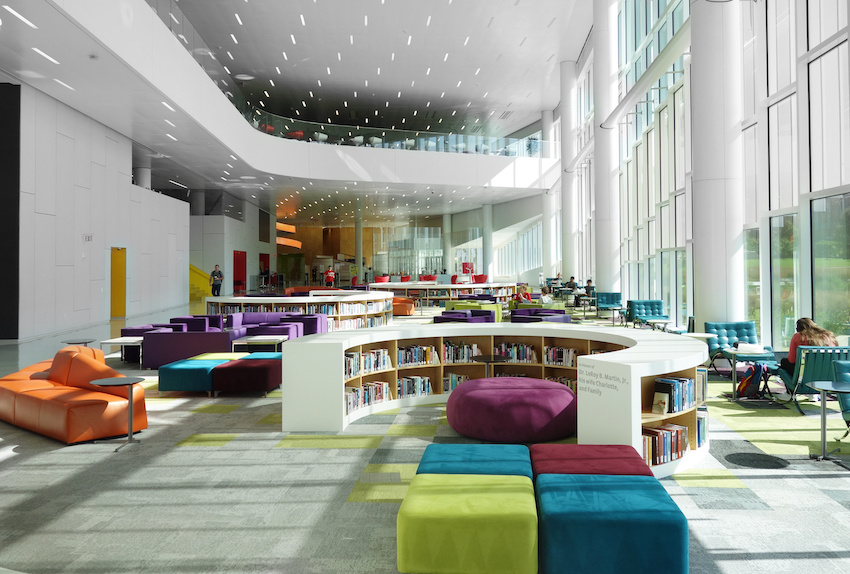
RALEIGH,NC/USA – 8-24-2018: The James B Hunt library on Centennial Campus of NC State University in Raleigh NC
Now more than ever, the community importance of school buildings is being recognized. Educational buildings must serve many functions beyond classroom education, such as providing essential social support services to the communities they serve. Multiple programming goals demand flexible spaces, and in addition, school design must focus on sustainability and security. Many firms are turning to BIM technology not only to lower costs and make the construction process more efficient, but also to design safer and better-performing school buildings. In this webinar, you will hear from a panel well-versed in using BIM for innovative educational projects who will share their experience and lessons learned.
 Chris Ambridge AIA, is an Associate Principal at cg+s architects. Chris has been at the firm since 2004 and has worked mainly on k-12 education projects within the Washington DC area. Chris is particularly interested the design opportunities that arise from close collaboration across a team during the design and construction process.
Chris Ambridge AIA, is an Associate Principal at cg+s architects. Chris has been at the firm since 2004 and has worked mainly on k-12 education projects within the Washington DC area. Chris is particularly interested the design opportunities that arise from close collaboration across a team during the design and construction process.
Saravanan Bala, AIA, LEED-AP, NCARB, ALEP is the Principal of the Education Studio  and is an Accredited Learning Environment Planner. He is an accomplished architect who has designed and managed several successful high schools around the state. Saravanan is a nationally recognized expert in evolutionary trends in curriculum, pedagogy and learning, and brings a wealth of research and data pertaining to the role educational environments can play to catalyze learning outcomes. He frequently presents at national and regional conferences and specializes in helping school districts developing their own pathways to achieving their educational goals.
and is an Accredited Learning Environment Planner. He is an accomplished architect who has designed and managed several successful high schools around the state. Saravanan is a nationally recognized expert in evolutionary trends in curriculum, pedagogy and learning, and brings a wealth of research and data pertaining to the role educational environments can play to catalyze learning outcomes. He frequently presents at national and regional conferences and specializes in helping school districts developing their own pathways to achieving their educational goals.
 Matt Johnson, RA is an Associate at Orcutt | Winslow specializing in K-8 design. His early experience with both commercial and hospitality architecture offers an understanding of complicated project design within large project teams and the practicalities of how a project comes to fruition. He has taken this experience and uses his passion and expertise in Building Information Modeling (BIM) to continue to advance project design and constructability, to allow for complete project efficiency in an integrated delivery model. As the BIM advisor for Orcutt | Winslow Education, he counsels colleagues in how to set up projects for the greatest efficiency and is a resource for day-to-day BIM application. Matt is also a Faculty Associate at Arizona State University, teaching BIM to upper division architecture students. Beyond his technical capabilities, Matt has a passion for “…designing places and experiences that attempt to enhance, focus and give hope to the human experience on earth.” From his perspective educational design offers that opportunity within its own microcosm of the community.
Matt Johnson, RA is an Associate at Orcutt | Winslow specializing in K-8 design. His early experience with both commercial and hospitality architecture offers an understanding of complicated project design within large project teams and the practicalities of how a project comes to fruition. He has taken this experience and uses his passion and expertise in Building Information Modeling (BIM) to continue to advance project design and constructability, to allow for complete project efficiency in an integrated delivery model. As the BIM advisor for Orcutt | Winslow Education, he counsels colleagues in how to set up projects for the greatest efficiency and is a resource for day-to-day BIM application. Matt is also a Faculty Associate at Arizona State University, teaching BIM to upper division architecture students. Beyond his technical capabilities, Matt has a passion for “…designing places and experiences that attempt to enhance, focus and give hope to the human experience on earth.” From his perspective educational design offers that opportunity within its own microcosm of the community.
 A licensed architect since 2016, Eddie Van Slambrouck, LEED AP, ALEP Project Architect, QKA Architecture developed his interest in design from a wide array of experiences, from building backyard chicken coops to planning large infrastructure projects. Further, while earning his Master of Architecture degree, he received several jury prize awards that fueled his interest in digital media and 3D modeling – a skill that enables his clients to accurately visualize and approve the final project on screen before construction begins. In addition, as a LEED Accredited Professional since 2008, Van Slambrouck has a strong expertise in sustainable design and renewable energy systems.
A licensed architect since 2016, Eddie Van Slambrouck, LEED AP, ALEP Project Architect, QKA Architecture developed his interest in design from a wide array of experiences, from building backyard chicken coops to planning large infrastructure projects. Further, while earning his Master of Architecture degree, he received several jury prize awards that fueled his interest in digital media and 3D modeling – a skill that enables his clients to accurately visualize and approve the final project on screen before construction begins. In addition, as a LEED Accredited Professional since 2008, Van Slambrouck has a strong expertise in sustainable design and renewable energy systems.
Learning Objectives:
- Describe how BIM can be used to improve the design and safety of buildings.
- Define how BIM can improve design adherence to the requirements of national and local codes.
- Explain how the different BIM modes of collaboration across disciplines improve the design and safety of buildings.
- List the ways in which BIM can assist designers in easily testing projects for sustainability and energy efficiency.
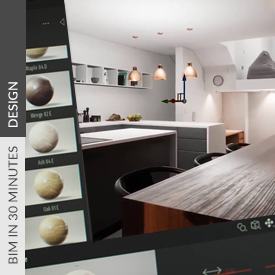 Whether you’re an established firm or a young studio, technology is rapidly evolving in the AEC market and clients are expecting high-tech when it comes to architectural design services. This is leading businesses to rethink their design approach. Join this BIM in 30 Minutes webinar to discover how to…
Whether you’re an established firm or a young studio, technology is rapidly evolving in the AEC market and clients are expecting high-tech when it comes to architectural design services. This is leading businesses to rethink their design approach. Join this BIM in 30 Minutes webinar to discover how to…
- Shift BIM earlier into the design process
- Incorporate “real-time” visualization such as Twinmotion with the Unreal Engine
- Use mobile apps such as the BIMx Hyper-model for presentations, design review and on-site coordination.
The team at Scenario Architecture is increasingly using real-time visualization in their design process. “I don’t wait anymore,” says Teodora Iancu, one of Scenario’s Architectural Designers. “As soon as I have an idea, I draw it in ARCHICAD and then one click away, it’s there for me to see” in Twinmotion. He says “it’s become intrinsic to our design.”
Ready to learn more? Schedule an ARCHICAD one-on-one demo today request a demo >>
 Whether you’re an established firm or a young studio, technology is rapidly evolving in the AEC market and clients are expecting high-tech when it comes to architectural design services. This is leading businesses to rethink their design approach. Join this BIM in 30 Minutes webinar to discover how to…
Whether you’re an established firm or a young studio, technology is rapidly evolving in the AEC market and clients are expecting high-tech when it comes to architectural design services. This is leading businesses to rethink their design approach. Join this BIM in 30 Minutes webinar to discover how to…
- Shift BIM earlier into the design process
- Incorporate “real-time” visualization such as Twinmotion with the Unreal Engine
- Use mobile apps such as the BIMx Hyper-model for presentations, design review and on-site coordination.
The team at Scenario Architecture is increasingly using real-time visualization in their design process. “I don’t wait anymore,” says Teodora Iancu, one of Scenario’s Architectural Designers. “As soon as I have an idea, I draw it in ARCHICAD and then one click away, it’s there for me to see” in Twinmotion. He says “it’s become intrinsic to our design.”
Ready to learn more? Schedule an ARCHICAD one-on-one demo today request a demo >>
